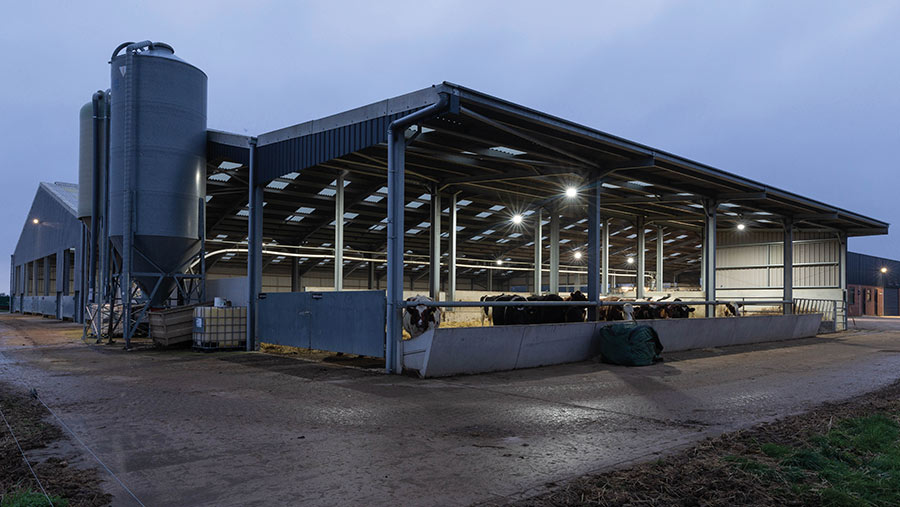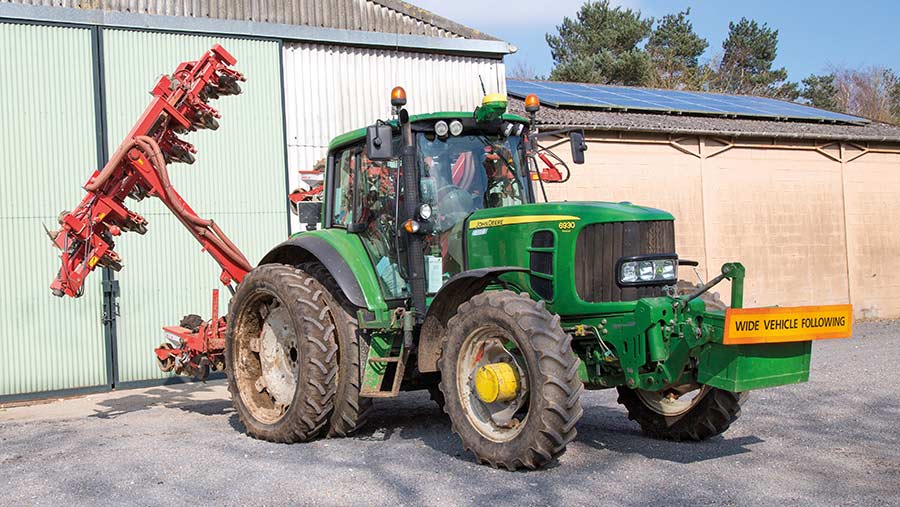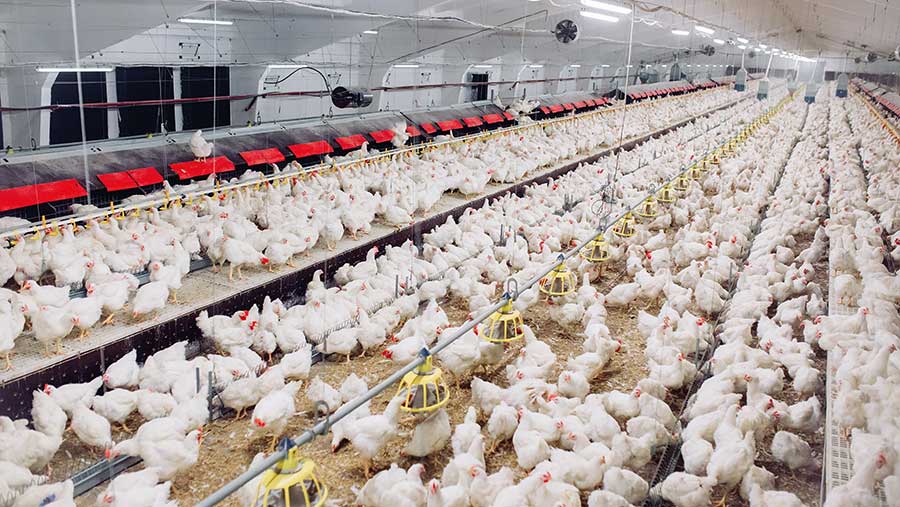Capital allowances – opportunities and pitfalls for farmers
 Different rates of relief apply on a building and its integral features © Tim Scrivener
Different rates of relief apply on a building and its integral features © Tim Scrivener It is more important than ever to understand the capital allowance regime.
Any potential large capital expenditure should be planned well in advance and discussed with an accountant so that both the correct timing and structure are in place to attract the best relief from the various rates of allowances.
Sam Kirkham, partner in the farms and estates team at accountancy firm Albert Goodman, and Sarah Cleave, who manages the team, set out the key considerations and pitfalls.
See also: Farm accounting advice – how to make the process run smoothly
What is the background?
Increasing relief using capital allowances, certainly for companies, has featured heavily in the past few Budgets.
Most recently the 130% super-deduction, introduced in 2021 by then-chancellor Rishi Sunak, has been replaced with what is known as full expensing for companies on certain qualifying new plant and machinery purchases from 1 April 2023 until 31 March 2026.
This means 100% of expenditure can be set against income in the year of spend, with no limit.
The £1m annual investment allowance (AIA) for all businesses has also been made permanent – this is important as it includes used equipment, which full expensing does not.
While the above is welcome for farming businesses, particularly those operating as a company, the complexity of the capital allowance system continues to increase.
This means taxpayers should be careful when planning machinery purchases, property improvements and new agricultural buildings.

Full expensing relief for companies is not available on second-hand machinery © GNP
There are now many capital allowance rates, each with their own limits and conditions.
The benefit for corporate business is that full expensing and the 50% first-year allowance (FYA) on what are termed special-rate assets have no annual limit, unlike the AIA (see table “Capital allowances – limits and relief rates”).
Special-rate assets include the integral features which perform a function in a building, for example electrics, heating, ventilation and plumbing. Solar panels also qualify.
Capital allowances – limits and relief rates |
||||
|
Asset class |
Capital allowance |
Limit of claim |
New or second-hand |
Capital allowance rate |
|
Main rate plant and machinery |
Full expensing (companies only) |
No limit |
New only |
100% |
|
AIA |
£1m |
All |
100% |
|
|
Main pool |
No limit |
All |
18% |
|
|
Special Rate items (Long life assets or integral features |
AIA |
£1m |
All |
100% |
|
First year allowance (FYA) special rate (companies only) |
No limit |
New only |
50% |
|
|
Special-rate pool |
No limit |
All |
6% |
|
|
Buildings – excluding residential buildings |
Structure and buildings allowance |
No limit |
New only |
3% |
Full expensing: What is not included?
As with the super-deduction, the following do not attract full expensing:
- Used plant and machinery
- Special-rate items such as solar panels – this is often misunderstood
- Cars (except for the purposes of the FYA for electric and zero-emissions cars)
- Expenditure incurred in the accounting period in which the qualifying activity is permanently discontinued
- Expenditure on the provision of plant or machinery that is to be leased.
Expenditure on plant or machinery that is to be leased

© Davit85/Adobe Stock
One common business structure is a group of companies which includes an asset-owning company (a holding or parent company) and a trading business (subsidiary or trading company), with the holding company leasing the assets to the trading subsidiary.
This structure is often used in the poultry sector where there are high-value assets, including the poultry buildings and associated plant and machinery, which are held separately from the trading business to minimise risk and protect asset value from the potential financial impact of catastrophes, such as an outbreak of bird flu.
This structure is also used in some larger farm businesses, for example on dairy farms, where a limited company is part of the structure and leases machinery to the trading company.
In these cases, the equipment purchased by the holding company will not qualify for full expensing (or previously the super-deduction) because of the leasing exclusion.
Therefore, in these cases, where significant investment is being undertaken it is worth reviewing how much of the AIA limit will be used by the group (currently up to £1m shared between associated companies).
If the group has exceeded its AIA limit, then the trading business should acquire any further new main rate qualifying assets to maximise the availability of 100% relief using full expensing.
This would therefore involve some planning to ensure that purchases of assets are made by the correct business during the accounting period.
Corporation tax rates
The timing of the start of full expensing coincides with the previously announced increase to the main rate of corporation tax.
From 1 April 2023, the corporation tax rate is based on the level of a company’s profits, with those above £250,000 paying tax at 25% (on the total), and those with profits below £50,000 continuing to pay at 19%.
What is known as marginal relief will apply to profits between £50,000 and £250,000.
The tax due in this bracket is calculated by applying a complex formula which has the effect of increasing the tax due in this range to a rate above 25%.
Care also needs to be taken with the £50,000 lower and £250,000 upper limits, as these will be proportionately reduced where an accounting period is shorter than 12 months and/or there are associated companies.
Timing of expenditure should therefore be considered to maximise relief (see table “Effect of timing on capital allowances for company with 31 March year-end”).
For companies with year ends which straddle 31 March the position is more complicated.
How timing affects amount of capital allowances for company with a 31 March year end |
|||||
|
Asset |
Capital allowance claim |
Capital allowance |
Corporation tax rate |
Effective relief |
|
|
New tractor purchased for £100,000 before 31 March 2023 |
Super deduction |
130% |
19% |
£24,700 |
|
|
|
|
|
Profits |
Corporation tax rate |
|
|
New tractor purchased for £100,000 after 1 April 2023 |
Full expensing |
100% |
<£50,000 |
19% |
£25,000 |
|
£50,000-£250,000 |
26.5% |
£26,500 |
|||
|
£250,000-plus |
25% |
£25,000 |
|||
Annual Investment Allowance – beware of transition arrangements
All business types looking to invest in plant and machinery, whether new or used, can spend up to £1m in an accounting year on equipment and claim 100% of that expenditure in the same year, under the AIA.
This limit applied in 2022 and was made permanent from 31 March 2023.
However, as this is a change from a temporary to a permanent amount, transitional rules will apply, making the timing of investment even more important for farming businesses where the accounting period straddles 31 March 2023.
For example, in the case of an accounting year ending 31 May 2023, qualifying capital spend on plant and machinery in the period 1 April 2023 to 31 May 2023 may be capped:
- £1m AIA available for full year
- So £1m is available for qualifying capital expenditure up to 31 March 2023, less any claim made after 31 March 2023
- However, capital expenditure on qualifying capital items bought between 1 April 2023 and 31 May 2023 is capped at £166,666 (2/12 x £1m), provided a £1m claim for the period to 31 March 2023 is not already made. This has a large impact on the amount of allowance possibly available.
AIA example for sole trader or partnership with 31 May year end |
||
|
Purchase date |
Pre 31 March 2023 |
1 April 2023 – 31 May 2023 |
|
Plant and machinery purchased for £300K |
£300,000 x 100% |
£166,666 x 100% |
|
£133,334 x 18% |
||
|
Total allowance |
£300,000 |
£190,666 |
In this example we would advise farmers, whether trading as a company, sole trader or partnership, to postpone the purchases between 1 April to 31 May until after May.
For companies, delaying the purchase would result in relief at the higher corporation tax rate.
This will not be so much of a problem for limited companies buying new equipment, due to the full expensing which, as mentioned above, has no limit, unlike the AIA.
However, this may affect companies with planned investment in special-rate items that are excluded from full expensing but where the intention is to use the AIA to get 100%, such as solar panels or heating and ventilation systems in a poultry building.
